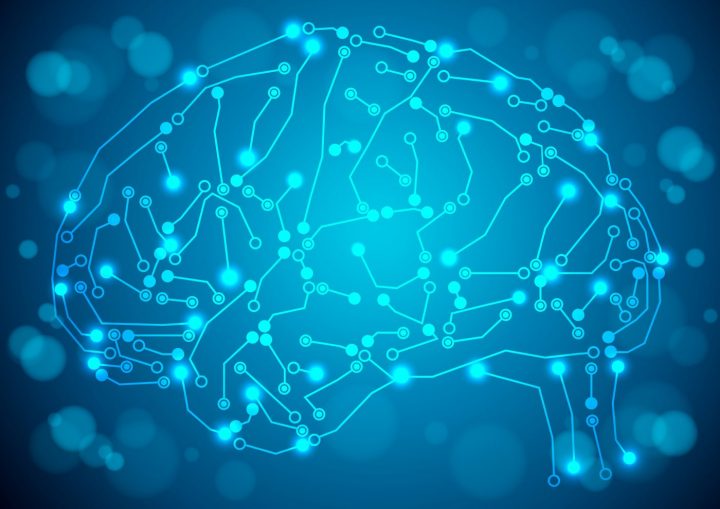Parkinson’s Gene Therapy Eases Motor Symptoms by Creating New Brain Circuits, Study Shows

Photo by Shutterstock Music helps connections in the brain.
An experimental gene therapy called AAV2-GAD, previously shown to improve motor function in Parkinson’s patients, works by creating new circuits in the brain involving motor regions, researchers have discovered.
Their findings were published in the study, “Gene therapy reduces Parkinson’s disease symptoms by reorganizing functional brain connectivity,” in the journal Science Translational Medicine.
Neurodegeneration in Parkinson’s disease begins with the gradual loss of dopamine-producing nerve cells in the substantia nigra, a region of the brain responsible for movement control. However, at symptom onset, several changes in connectivity and metabolism (set of life-sustaining chemical reactions) in distinct areas of the brain are present.
The subthalamic nucleus (STN), which is key in the regulation of the motor circuitry, is one of the areas of the brain affected by Parkinson’s, becoming hyperactivated. Surgical interventions in this area, such as deep brain stimulation, have been pinpointed as a good therapeutic target to ease motor symptoms.
AAV2-GAD, developed by Neurologix, consists of a modified and harmless adeno-associated virus (AAV) that transports and delivers the glutamate decarboxylase (GAD) gene — which has the instructions to produce GAD, a key enzyme in the production of GABA, the major suppressive messenger molecule in the brain. AAV2-GAD is delivered through a surgical procedure.
Results from previous Phase 1 (NCT00195143) and Phase 2 (NCT00643890) clinical trials have shown that the administration of the AAV2-GAD gene therapy directly into the STN region resulted in significant motor improvements in Parkinson’s patients, which were maintained for at least a year.
Despite the promising results of AAV2-GAD, the precise mechanisms behind it remained unclear.
Discuss the latest research in the SMA News Today forums!
Scientists hypothesized, however, that the local delivery of the GAD gene to induce the production of GAD and GABA would convert STN nerve cells to a suppressive state and reduce their hyperactivity, ultimately easing Parkinson’s motor symptoms.
Clinical responses in Parkinson’s disease can, in theory, arise from changes in the underlying abnormal disease network, development of new networks, a placebo effect, or a combination of all three.
Previous studies have shown that Parkinson’s patients show a disease-specific metabolic network — known as Parkinson’s disease-related covariance pattern (PDRP) — and that this pattern can be used as an objective and sensitive indicator of disease progression and that its reduction is strongly associated with motor improvements, assessed with the Unified Parkinson’s Disease Rating Scale (UPDRS).
Researchers at The Feinstein Institute for Medical Research, in Manhasset, New York, have now evaluated whether the motor improvements associated with delivery of AAV2-GAD to the STN were due to changes in PDRP or to other mechanisms.
They compared the brain metabolic networks of 36 Parkinson’s patients who participated in the previous double-blind, randomized, controlled Phase 2 trial: 15 in the AAV2-GAD group and 21 in the control group (sham surgery). These specialized brain scans were obtained at the beginning of the study, and six and 12 months after surgery.
“Current Parkinson’s disease therapies act on the abnormal disease network in the brain and often stop working over time as the body builds a tolerance,” David Eidelberg, MD, the study’s senior author and director of the Center for Neurosciences at the Feinstein Institute, said in a press release. “What we observed with AAV2-GAD therapy is quite the opposite.”
To the team’s surprise, AAV2-GAD did not change Parkinson’s abnormal brain circuitry, like current therapies, but instead promoted the formation of new brain networks connecting the STN to motor regions, which became mature one year after surgery.
Patients in the control group did not show this type of rewiring, and changes in UPDRS motor scores were found to be significantly associated only with the AAV2-GAD-specific brain metabolic network.
Data showed that while AAV2-GAD delivery to the STN did not act on the disease network, it induced the rewiring of key areas of the brain, compensating for the faulty circuitry and showing motor benefits for Parkinson’s patients.
The team noted that a larger Phase 3 trial is required to confirm these findings and the therapeutic effects of AAV2-GAD delivery to the STN, and that metabolic network analysis might be useful for evaluating therapeutic effectiveness in patients with neurological disorders in clinical trials.
“This latest work mapping the therapeutic benefit of AAV2-GAD gene therapy is a major next step to further refining therapies that combat the root causes of [Parkinson’s disease],” said Kevin J. Tracey, MD, Feinstein Institute’s president and CEO.






